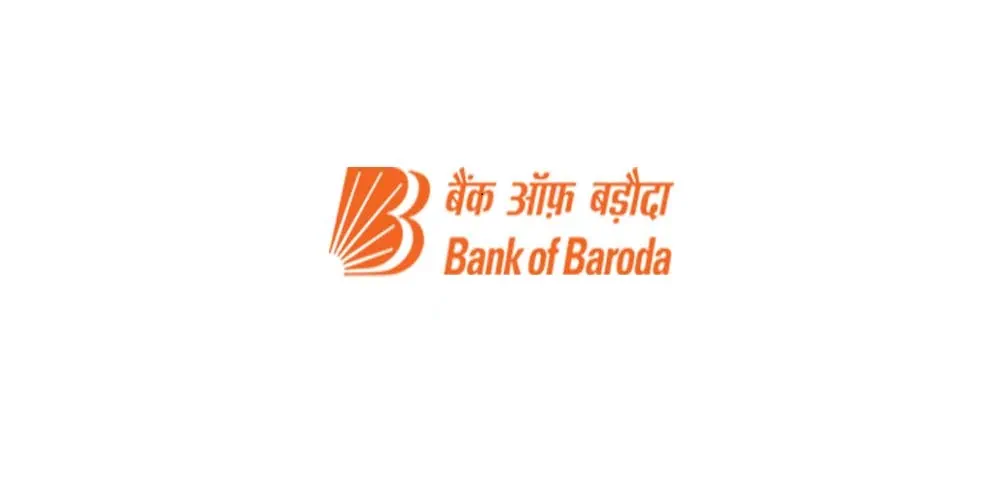
Types of Mutual Fund Schemes
06 Sep 2023

Table of Content
-
Classification of Mutual Funds
-
Types of Mutual Fund Schemes based on Organisation Structure
-
Types of Mutual Fund Schemes based on Asset Classes
-
Types of Mutual Fund Schemes based on Portfolio Management
-
Types of Mutual Fund Schemes based on the Investment Objective
-
Types of Mutual Fund Schemes based on Risk Appetite
-
Types of Mutual Fund Schemes based on Speciality
-
Conclusion
-
FAQs on Types of Mutual Funds
Over the past decade, the mutual fund industry in India has made significant progress. The key growth drivers were the entry of new players, changes in regulations that increased the popularity of Systematic Investment Plans (SIPs) and the overwhelming participation of retail investors. As a result, the mutual fund industry's Asset Under Management (AUM) grew about five-fold between May 2013 and May 2023. Furthermore, the total number of SIP accounts as of 31 May 2023 was at 6.53 core.
Today, the industry offers different types of mutual fund schemes to address the needs of various kinds of investors. At the end of May 2023, the total number of mutual fund schemes in India stood at 1,441. All these schemes can be classified in different ways based on their various characteristics.
Classification of Mutual Funds
Different classifications of mutual funds are:
- Based on the organisation structure
- Based on asset classes
- Based on investment objectives
- Based on portfolio management
- Based on speciality
- Based on risk appetite
Let's understand all the classifications in detail.
Types of Mutual Fund Schemes based on Organisation Structure
Based on their structure, mutuals funds are classified as:
- Close-ended schemes: Close-ended funds come with a fixed maturity period. Fund houses issue the units of these schemes only at the time of their New Fund Offer or NFO. After the NFO period, these schemes are listed on stock exchanges. Investors can trade their units on the stock exchanges if they want to leave these schemes before the maturity period ends.
On maturity, the schemes are dissolved and the money is returned to the investors at the Net Asset Value, or NAV, of the day. Less volatility in NAV is the most significant benefit of this mutual fund type. As cash in and outflows are restricted, their NAV shows lesser fluctuations.
Close-ended funds are ideal for those with a long-term investment perspective. It's also apt for those seeking an avenue to park a hefty sum for an extended period. - Open-ended schemes: As the name suggests, the units of these schemes are open for buying and selling even after the NFO. That is, investors can buy/sell the units of an open-ended fund according to their convenience. Moreover, there is no restriction on the number of units that can be issued.
A higher level of liquidity is the most striking feature of open-ended funds. Investors can sell the units on the NAV of the day. Additionally, investors can take advantage of systematic plans for entering and exiting these plans.
Open-ended funds are a good choice for those who want a highly liquid investment option and are willing to take on moderate to high risk. - Interval schemes: Interval schemes are the hybrid version of both open-ended and close-ended funds. The units of these schemes are available for buying and selling only during specified transaction periods called intervals. Similar to close-ended schemes, listing the units of interval schemes on stock exchanges is mandatory.
Interval funds are apt for investors who seek exposure to unconventional assets like forestry tracts or commercial property. - Equity funds: Equity funds mainly invest their assets in the shares of companies. As per the guidelines, an equity mutual fund scheme should invest at least 65% of its assets in equities or equity-related investments. The remaining funds are invested in other, more secure asset classes to offset the risk. The returns from these funds depend on the performance of the shares they invest.
- Based on the way they are managed - active and passive funds.
- Based on the market capitalisation of the stocks they invest in - small-, mid-, multi-, and large-cap funds.
- Based on their geography - domestic and foreign funds. They can also be classified as broad-market, regional or single-country funds.
- Based on the sector they invest in - pharma, FMCG, real estate, etc.
- Debt funds: Debt funds invest their assets in fixed-income instruments, such as corporate/government bonds, T-bills, or certificates of deposits. Compared to equity funds, debt funds are less risky and have lower expense ratios. Moreover, they give better returns than traditional investment options like fixed deposits. Hence, they can be a better choice for those seeking regular income.
- Hybrid funds: Hybrid funds consist of both debt and equity components. This type of mutual fund is suitable for investors with a moderate risk appetite. Hybrid funds can be classified based on their asset allocation as follows:
- Conservative hybrid funds - invest at least 75% of the asset in debt and the rest in equity.
- Aggressive hybrid funds - invest 65% to 80% of the asset in equity or equity-related instruments and the remaining in money market and debt instruments.
- Dynamic asset allocation funds - invest in both debt and equity, and their proportion varies with the market condition.
- Multi-asset allocation funds - invest at least 10% of their money in at least 3 asset classes, and the proportion changes with market conditions.
- Arbitrage funds - invest a minimum of 65% of their asset in equity and the rest in debt and money market instruments.
- Equity savings funds - invest at least 65% of their asset in equity and equity-related instruments and a minimum of 10% in debt instruments.
- Money market funds: Money market funds normally invest in low-risk, short-term securities such as T-bills, certificates of deposit, commercial paper, etc. They offer high liquidity; investors often invest in the funds as a short-term cash management tool.
- Active funds: In active funds, the fund managers actively manage the portfolio by deciding which securities to buy and sell. These funds are designed to outperform a specific benchmark index or achieve higher returns through active management strategies.
- Passive funds: Passive funds are designed to replicate the performance of a particular market index. They aim to match the returns of the index they track instead of outperforming it. They are called 'passive' funds because they do not involve active stock selection or market timing strategies.
- Growth funds: Growth funds focus on investing in the stocks of companies that are expected to register above-average growth rates compared to the overall market or their industry peers. These mutual funds are designed to provide high returns to investors. Hence, they carry a higher level of risk.
- Income funds: Investors can rely on income funds for a steady income stream. They provide regular income through interest payments or dividends. These funds typically invest in various assets that generate income, such as bonds, stocks that pay dividends, and other fixed-income securities. Income funds suit retirees or those seeking to supplement their current income.
- Liquid funds: Liquid funds invest in short-term debt instruments with high liquidity and low risk. They generally invest in securities with maturities of not more than 91 days. Liquid funds are designed to provide investors with a safe and liquid investment option, allowing them to easily convert their mutual fund investments into cash without incurring significant losses. Returns from liquid funds depend upon the short-term interest rate prevalent in the market.
- Low-risk funds: Mutual funds that invest in relatively lower-risk avenues like debt instruments fall under this category of mutual funds. These funds are typically designed to provide stable returns rather than aggressive growth.
- Medium-risk funds: Medium-risk mutual funds typically invest in a diversified portfolio of assets that have a moderate level of risk, such as a mix of stocks, bonds, and other financial instruments. They aim to strike a balance between potential returns and risk exposure.
- High-risk funds: Funds that have high-risk assets, such as stocks, options, futures, commodities, or emerging markets, in their portfolio come under this classification of mutual funds. High-risk funds aim to generate high returns and are ideal for wealth creation. Equity funds are an example of high-risk funds.
- Sector funds: Mutual funds that invest in a particular industry are called sector funds. Returns from these funds entirely depend on the performance of these sectors. Technology funds and real estate funds are a few examples of sector funds.
- Index funds: Index funds invest in a diversified portfolio of stocks that comprise the chosen index and in the same proportion as the index. Their investment strategy is passive, intending to replicate the performance of the index they are tracking.
- Global funds: Global funds, also known as international funds, allow Indian investors to invest in foreign securities and markets. Exposure to international markets helps investors to diversify their portfolios.
- Fund of funds: Fund of funds or multi-manager funds invest in a portfolio of other mutual funds instead of directly investing in individual securities or assets. By investing in multiple funds, these funds aim to spread the investment risk and potentially achieve higher returns.
- Retirement funds: Retirement mutual funds are specifically designed to aid individuals in accumulating wealth for their retirement years. These funds invest the pooled money in stocks, bonds, and other securities.
- Emerging market funds: Emerging market funds focus on investing in securities from emerging market economies. These economies are typically characterised by rapid economic growth, expanding populations, and increasing industrialisation. Investing in emerging market funds allows investors to participate in the growth potential of these economies.
- The investor's financial goals, like retirement, wealth creation, etc.
- The risk appetite of the investor, which depends upon the investor's age, income, and investment experience.
- The investment horizon. If an investor has a short investment horizon, they should consider funds that invest in stable assets. However, those with a longer investment horizon may consider riskier schemes such as equity funds.
- The mutual fund's past performance, analyse and compare a fund's return with the benchmark.
- The investment strategy of the fund. Investors should select the one that aligns with their financial goals and risk appetite.
- Compare the expense ratio of various funds that belong to the same category. A lower expense ratio is considered good as it increases returns.
- The liquidity and size of the funds also matter. If the size of the fund is huge, it may encounter challenges in maintaining its performance because of restrictions in deploying capital effectively. Similarly, small-sized funds may produce lower returns and face liquidity challenges.
- The investment objective of the fund
- Fund's expense ratio
- Past performance of the fund
- Experience of the fund manager
- The risk level of the fund
- The size of the fund
Types of Mutual Fund Schemes based on Asset Classes
The different types of mutual funds based on their asset classes are as follows:
Equity funds can be again categorised in many ways, such as:
Equity funds are suitable for those who have long investment horizons. Furthermore, they have a track record of providing superior returns than other types of mutual funds, making them a solid option for building wealth.
Types of Mutual Fund Schemes based on Portfolio Management
The classification of mutual funds based on portfolio management can be done as follows:
Types of Mutual Fund Schemes based on the Investment Objective
Based on the investment objective, mutual funds are classified as follows:
Types of Mutual Fund Schemes based on Risk Appetite
Based on their risk appetite, mutual funds are categorised as follows:
Types of Mutual Fund Schemes based on Speciality
Speciality funds are also known as sector-specific or thematic funds. They focus on specific industries, themes, or sectors of the economy. These funds aim to capitalise on the growth potential of a particular sector or theme by investing in companies operating within that domain. In India, there are several speciality funds available to investors. A few examples of thematic funds are as follows:
Also Read - How to Invest in Mutual Funds: Explained in Easy Ways
Conclusion
Indeed, mutual funds are a better option for wealth creation and portfolio diversification. Today, different types of mutual fund schemes are available in the market to cater various needs of investors. Hence, before investing in any mutual fund scheme, investors should analyse the mutual fund performance and select the one that aligns with their financial goals, investment horizon, and risk appetite. Be sure to read the policy document to know where the mutual fund invests its assets and other terms and conditions associated with the fund.
FAQs on Types of Mutual Funds
1. Which mutual fund is the best for long-term investments?
For long-term investments, equity funds are the most appropriate choice. They have a track record of providing higher returns in the long haul. However, while selecting the fund, investors should consider their risk appetite as well as financial goals.
2. Which mutual fund is the best to invest in now?
Choosing the right fund for investment depends on various factors, like an investor's risk appetite, financial goals, and investment horizon. Considering that these factors differ from person to person, it's challenging to determine the best fund to invest in currently. Investors should carefully pick a fund that aligns with their investment objectives to make an informed decision.
3. How to choose the best mutual fund?
Mutual fund selection is based on the following factors:
4. Which mutual fund is the best for the short term?
For short-term investments, debt funds are the best option. They carry low-medium risks and give stable returns. Debt funds generally invest in government securities and securities of top-rated companies.
5. How many mutual funds should I invest in?
Mutual funds aim to diversify investors' portfolios. However, this does not mean that you have to invest a small amount in several schemes. Putting a little money in several funds results in over-diversification and taking unnecessary risks. It not only reduces the returns but also makes management challenging. Hence, depending on your risk appetite and financial goals, you should park a moderate sum in a few good-quality funds.
Ideally, you should invest only in 4-6 funds of different categories to diversify your portfolio and maximise your returns.
6. What are the best mutual funds to invest in?
Mutual fund selection is influenced by the investor's income, financial goals, risk appetite, and investment horizon. And these factors change from person to person. Hence, while selecting a mutual fund scheme, an investor should make the decision based on their unique circumstances and needs.
7. How to choose mutual funds?
Investors should consider the following elements of a mutual fund before making the decision:
Additionally, when selecting funds, it's essential to consider the investor's financial goals, investment horizon, and risk appetite.
Popular Articles
-
Disclaimer
The contents of this article/infographic/picture/video are meant solely for information purposes and do not necessarily reflect the views of Bank of Baroda. The contents are generic in nature and for informational purposes only. It is not a substitute for specific advice in your own circumstances. Bank of Baroda and/ or its Affiliates and its subsidiaries make no representation as to the accuracy; completeness or reliability of any information contained herein or otherwise provided and hereby disclaim any liability with regard to the same. The information is subject to updation, completion, revision, verification and amendment and the same may change materially. The information is not intended for distribution or use by any person in any jurisdiction where such distribution or use would be contrary to law or regulation or would subject Bank of Baroda or its affiliates to any licensing or registration requirements. Bank of Baroda shall not be responsible for any direct/indirect loss or liability incurred by the reader for taking any financial decisions based on the contents and information mentioned. Please consult your financial advisor before making any financial decision.






